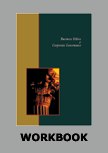Greenpeace: Working for a "Green and Peaceful Future"
|
ICMR HOME | Case Studies Collection
For delivery in electronic format: Rs. 500 ; For delivery through Shipping & Handling Charges extra: Rs. 500 +Shipping & Handling Charges extra
»
Business Ethics Case Studies 
Custom Search
Please note: |
||||||||||
|
"Greenpeace exists because this fragile Earth deserves a voice." - www.greenpeace.org. "What we do is draw the attention of the public to the ongoing ecological plight of the planet, that's what we do, and we make no bones about it. We continue to sound the alarm." - Lynette Thorstensen, coordinator of Greenpeace International's atmosphere campaign.1 ."We all want a Greenpeace that shouts about potential problems... but we should not trust them to be the sole source of information" - Dr. Lomborg, former member, Greenpeace and author of "The Skeptical Environmentalist".2 IntroductionIn June 2003, thirty five Greenpeace activists were arrested near the headquarters of oil major ExxonMobil in Dallas, USA where the annual shareholder meeting was being held. They were charged with breaking the law and disrupting work. The activists had used a van to block the entrance of the company's office and had chained themselves to the front gate and to the van.
Upto the 1990s, Greenpeace activists used controversial methods to protest against business organizations and governments that they believed were acting in a way that harmed the environment. But gradually, business organizations, governments and people around the world started to view Greenpeace activists just as a group of hippies bent on creating a nuisance, rather than a group of socially and environmentally responsible people.
Greenpeace: Working for a "Green and Peaceful Future" - Next Page>> 
Custom Search
1] Hannah Bloch, James Geary, Helen Gibson, Bruce van Voorst, "Greenpeace gets real", Time Canada, Issue 24, p38, 7p, June 10, 1996. |
Case Studies Links:-
Case Studies,
Short Case Studies,
Simplified Case Studies.
Other Case Studies:-
Multimedia Case Studies,
Cases in Other Languages.
Business Reports Link:-
Business Reports.
Books:-
Textbooks,
Work Books,
Case Study Volumes.







